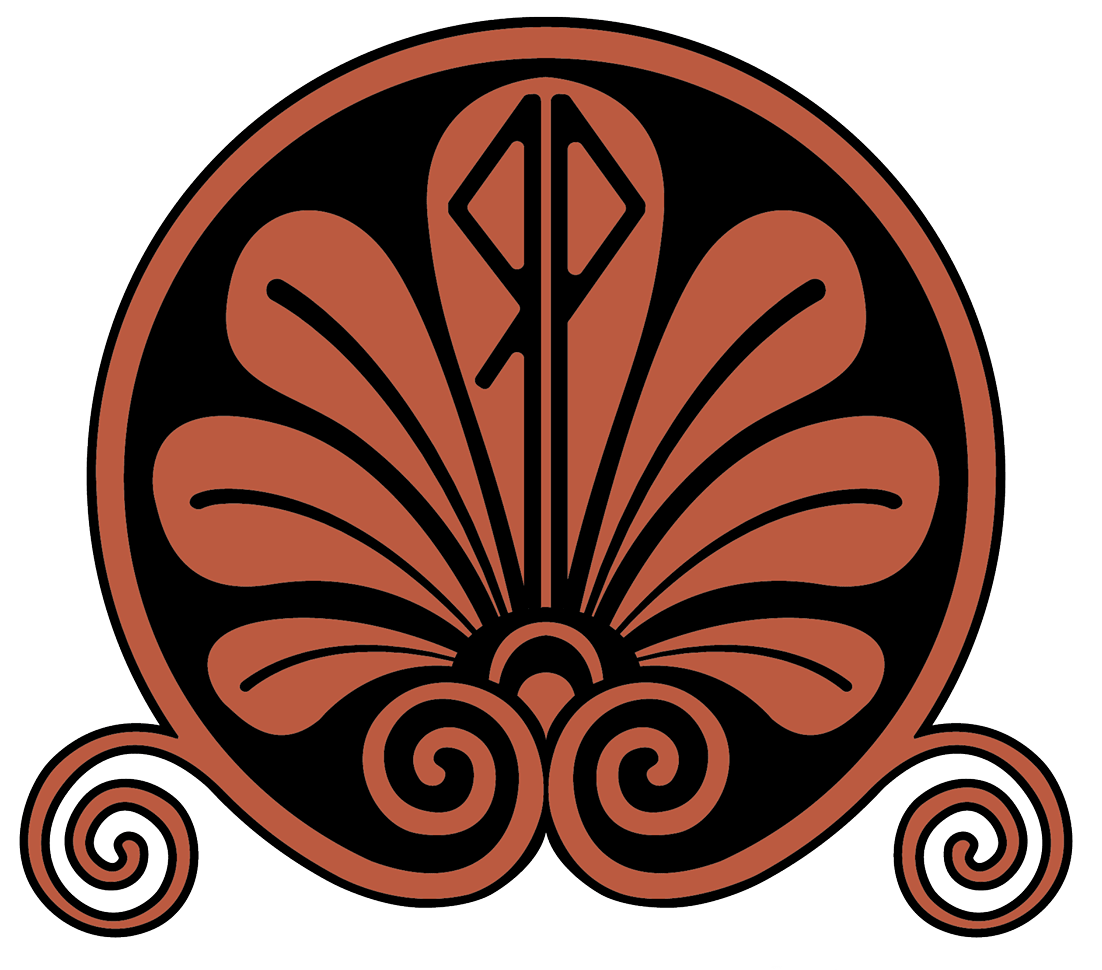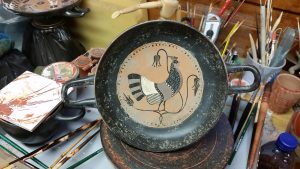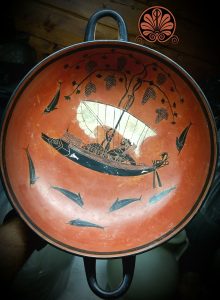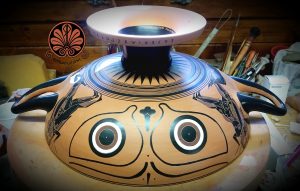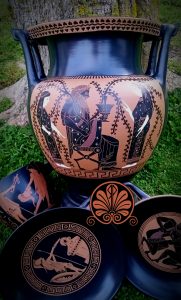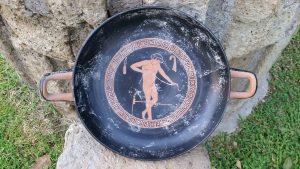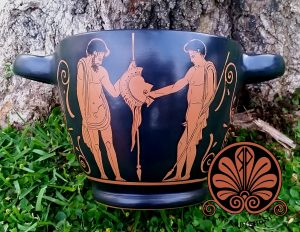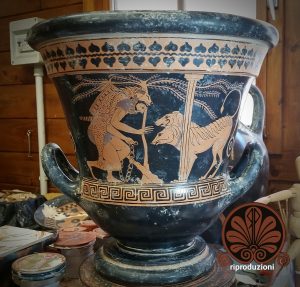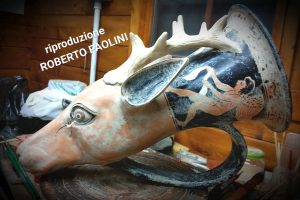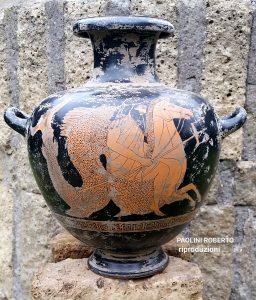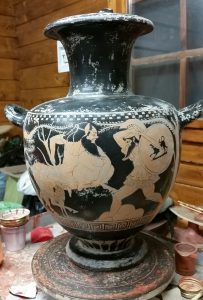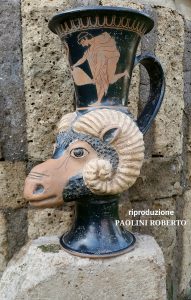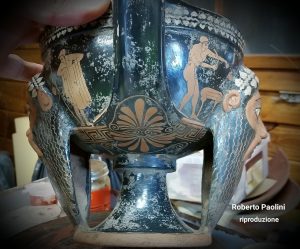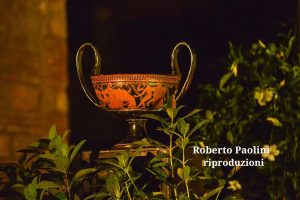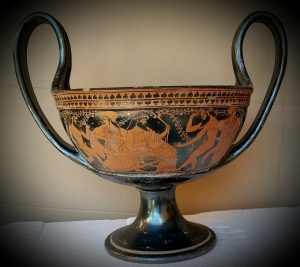I reproduce various types of Etruscan, Greek and Roman pottery including: Black figure pottery, Red figure pottery, Buchhero, Impasto and Sigillata.
Black Figure Pottery
This technique involved painting figures onto the dry surface of a clay vase using a fine liquid clay rich in iron oxide known as slip. Next, the slip was incised with pointed instruments to add outlines and details to the figures by revealing the underlying clay through the scratches. Additional details could be created by adding red and white pigments.
With the painting complete, the vessel was ready to be fired in a kiln. During the firing process, the iron oxides present in the pigments of the slip assumed a glossy black colour. The result was an image based on a scheme of four colours. However, the defining element in the black figure technique was the presence of incisions.
In Corinth, details using red pigments were soon added after the introduction of the incisions. However, white details were only added at a much later time. In Athens, the use of white details was already widespread in second half of the VI century BC, while, red details were only introduced in the third quarter.
BLACK FIGURES REPRODUCTIONS
Red Figure Pottery
The red figure technique was achieved, after an initial sketch, by drawing the outlines and internal details of figures onto the dry surface of a clay vase. Next, the entire background of the scene was filled in using a slip, thus rendering the original surface of the vase only visible where figures were present.
Thanks to this technique, the appearance of the scene depicted on a vase became more similar to sculptural relief, where bright or coloured figures stood out on a dark background. As opposed to mural painting, which depicted figures on a light background. The details and contours of the figures were traced with a brush, using a diluted paint. This diluted paint was also used to fill in the backgrounds. In comparison to the black figure technique, the red figure technique created a new relief for the form of a vase, by using a black background to emphasize contours. The freedom permitted by the new technique allowed painters to broaden the study, representation and bio-mechanics of the human body.
Once the first phase of firing was complete, additional details could be applied by using white or purple pigments. However, these pigments were hardly used until the end of the fifth century
RED FIGURES REPRODUCTIONS
